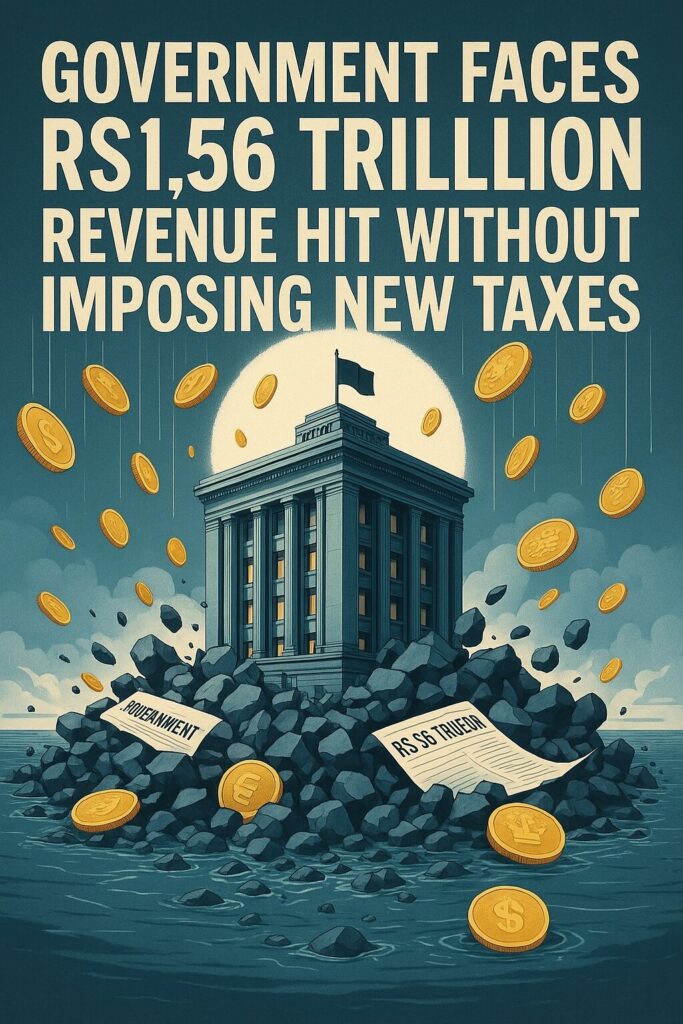
In a bold move to balance public welfare with fiscal prudence, the Pakistani government has opted against introducing new taxes to offset a staggering Rs1.56 trillion revenue shortfall caused by revised tariff agreements with state-owned power generation companies (Gencos). This decision, unveiled during a recent public hearing, reflects an attempt to prioritize consumer relief while navigating the complexities of fiscal sustainability. By renegotiating capacity payment obligations, authorities aim to pass on Rs1.5 trillion in savings to electricity consumers—a long-overdue correction of structural inefficiencies in the energy sector. However, this relief comes at a cost, exposing the fragile equilibrium between populist measures and macroeconomic stability.
The tariff revisions target one of the most persistent drains on public finances: capacity payments. Historically, these payments obligated the government to compensate power producers for their generation capacity, regardless of actual electricity consumption—a system that ballooned fiscal liabilities due to inefficiencies like transmission losses and low demand. Reducing these fixed charges not only alleviates consumer bills but also curtails future fiscal risks. However, the immediate consequence—a Rs1.56 trillion dent in non-tax revenue—poses a significant challenge for a nation already contending with a narrow tax base, rising debt servicing costs, and stringent IMF-mandated fiscal targets.
Without compensatory taxation, the government now faces tough choices to bridge this gap. Officials have hinted at trimming existing power subsidies, a move that risks diluting consumer savings and sparking public discontent, particularly among low-income households reliant on subsidized tariffs. This underscores the delicate political economy of subsidy reforms: while rationalizing expenditures is fiscally prudent, poorly targeted cuts could exacerbate inequality and erode public trust. Beyond subsidies, the government may also need to scale back development spending, delay infrastructure projects, or increase borrowing—all of which carry long-term economic repercussions.
The situation highlights the urgent need for innovative fiscal strategies. Strengthening tax compliance remains a perennial solution. Pakistan’s tax-to-GDP ratio, hovering around 9%, lags behind regional peers, with vast informal sectors and elite capture evading scrutiny. Modernizing collection systems, expanding the taxpayer base, and leveraging technology to curb evasion could unlock substantial revenues without new levies. Simultaneously, diversifying non-tax revenue streams—such as accelerating privatization of loss-making state enterprises, optimizing dividends from profitable public entities, and monetizing underutilized assets—could provide immediate fiscal breathing room.
The energy sector itself offers opportunities for savings. Reducing circular debt, which has surpassed Rs2.6 trillion, requires not just tariff adjustments but systemic reforms: upgrading aging transmission infrastructure to cut losses, incentivizing renewable energy investments to lower generation costs, and improving governance to prevent defaults by provincial distributors. Such measures could transform the sector from a fiscal black hole into a sustainable engine of growth.
However, the path forward is fraught with risks. Increased borrowing to offset the revenue gap could elevate debt sustainability concerns, particularly as global interest rates remain high. Meanwhile, austerity measures might stifle economic recovery at a time when GDP growth remains modest. For consumers, the dual impact of reduced subsidies and potential inflationary pressures from fiscal adjustments could negate the benefits of lower electricity tariffs.
The government’s decision reflects a calculated gamble: betting that short-term fiscal pain will yield long-term gains through a more efficient energy sector and enhanced public confidence. Success hinges on transparent communication and equitable burden-sharing. Protecting vulnerable populations through targeted social safety nets, rather than blanket subsidies, will be critical. Equally important is maintaining investor confidence by adhering to fiscal discipline and avoiding ad-hoc monetary interventions.
As Pakistan navigates this tightrope, the role of structural reforms becomes undeniable. Strengthening public financial management, enhancing accountability in revenue collection, and fostering public-private partnerships for infrastructure development could mitigate future shocks. While the absence of new taxes offers immediate respite, sustainable economic stability demands a holistic approach—one that balances immediate relief with the imperatives of growth, equity, and resilience.
This article was published on Publicfinance.pk.
Source: Web Research
